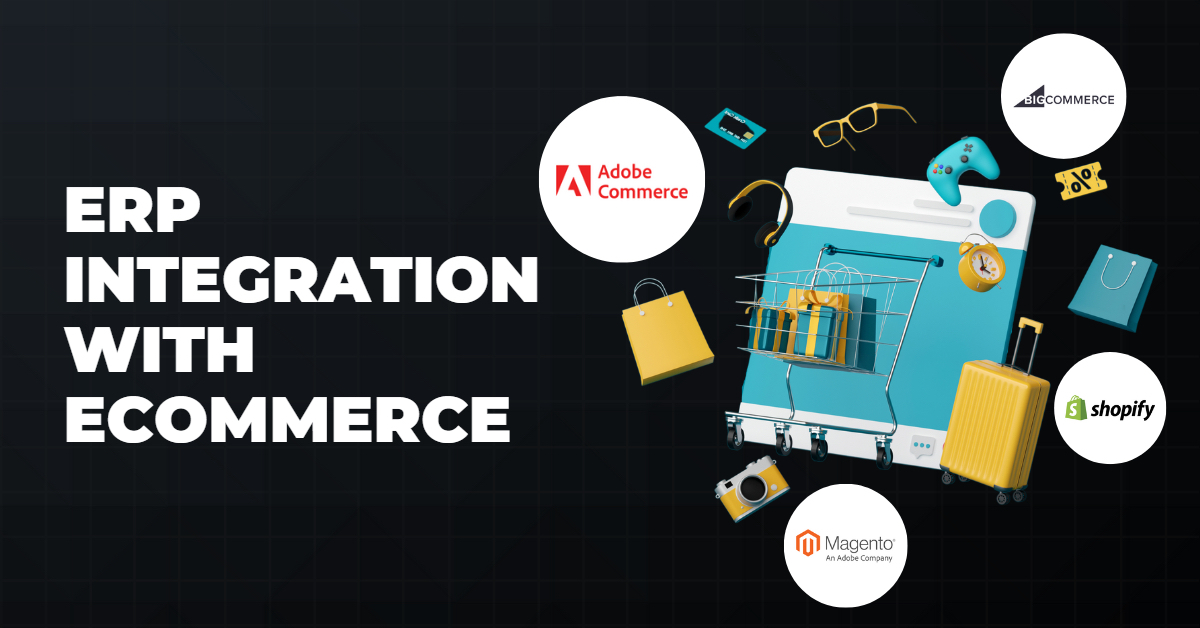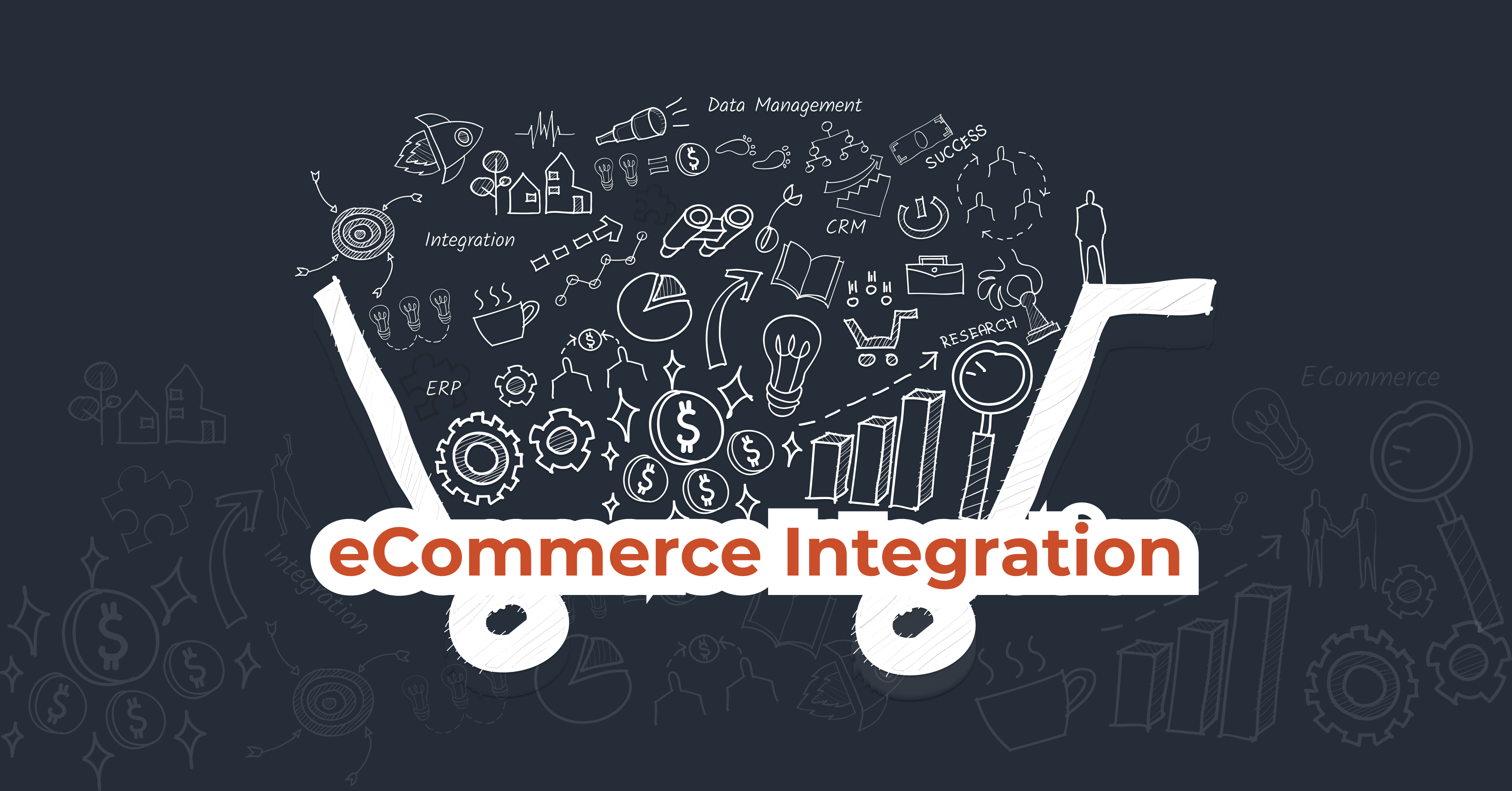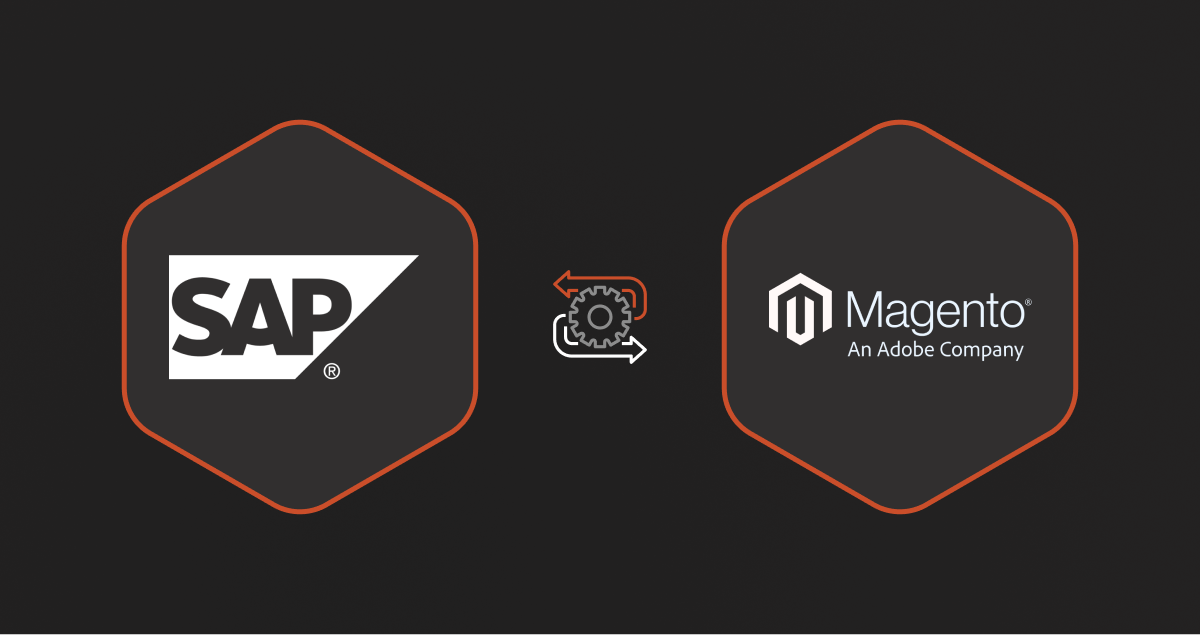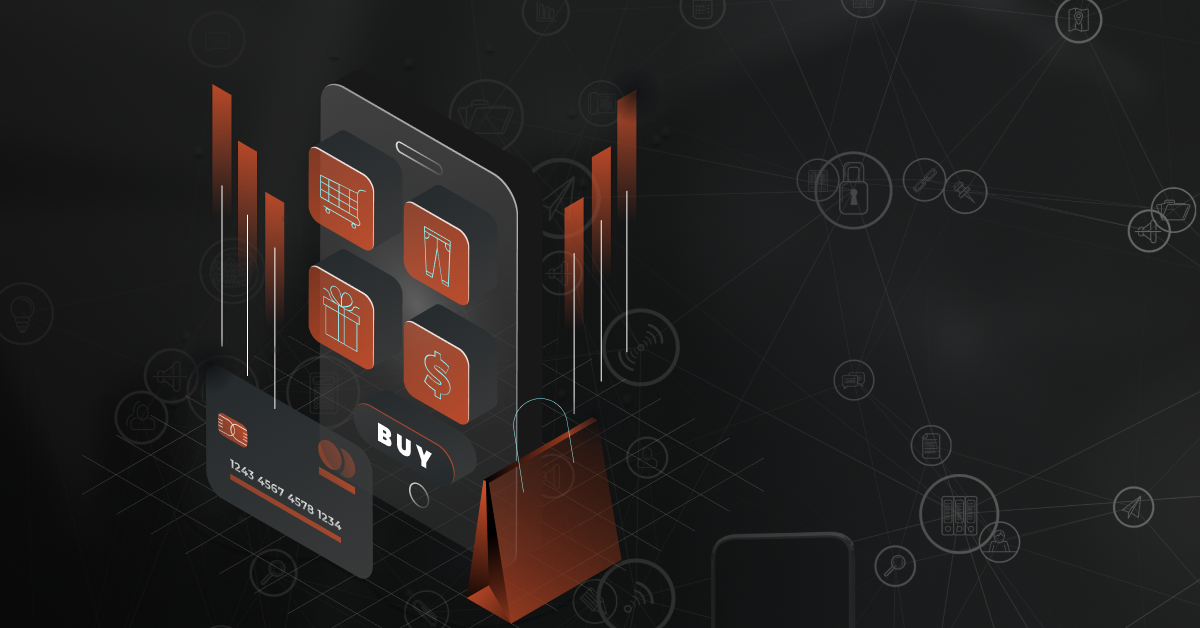An ERP eCommerce integration connects an organization’s frontend eCommerce site with its backend ERP system. This syncs data on products, orders, customers, and more across the two platforms. Automatic data synchronization boosts productivity and maximizes revenue.
Chances are, you use a major eCommerce system like Magento, Shopify, BigCommerce, SAP Commerce Cloud (previously SAP Hybris), or Salesforce Commerce Cloud. You keep data like orders, customer information, and more in this platform.
Meanwhile, you record internal information, like inventory, accounting, supply chain management, human resources, and even customer relationship management (CRM) data in an enterprise resource planning (ERP) system. Common platforms include Microsoft Dynamics, Netsuite, Epicor P21, Eclipse, Acumatica, Distribution One, and SAP Business One.
But these two separate systems have overlapping data. And different information on different platforms can lead to missed orders, incorrect shipping information, inaccurate pricing, outdated inventory, and other problems.
An ERP eCommerce integration solves these issues. It synchronizes the data across these two platforms and streamlines your workflow, eliminating tedious manual data entry and improving your business processes.
ERP – eCommerce Integration: Steps Involved
1. Data sources
First, you need to understand the type of data sources you’ll use. This matters because it can help you decide what type of integration will work best.
Cloud-based: Most of today’s ERP and eCommerce platforms are based in the cloud and use a software-as-a-service (SaaS) integration model. These are easiest to integrate since they have universal connectors that can be integrated into other modern platforms.
On-premise: This is a back-office ERP platform that’s run off local hardware. While you can integrate with this type of system, it tends to be legacy software that presents new challenges.
Hybrid: Some businesses use a combination of tools, like a cloud-based eCommerce site and an on-premise ERP platform.
Recommended Read: On Premise vs Cloud: Tools, ERPs and Integration Decoded
2. Methods for ERP – eCommerce Integration
You can set up an ERP integration using one of three different methods.
Build a custom integration/manual integration
Building customized connectors can be a smart alternative for firms with more sophisticated demands or specific requirements. Working with a development team to produce a custom solution that matches the specific needs of the organization is required.
Enterprise service bus
This is a communication layer that moves data between applications. It’s more efficient than a point-to-point system but has limitations with the amount of data it can process and can create its own bottlenecks.
Third-party integrator
This is an integration tool that connects your ERP and eCommerce platforms seamlessly and handles the integration by itself. It uses APIs to ensure the process runs smoothly. This kind of tool is called an integration platform as a service (iPaaS).
Frequency
Real-time: With this automation frequency, data is synchronized as soon as it’s available. While this can be more convenient, it requires extensive infrastructure and can be more challenging.
Batch: In this model, all data is updated at regular intervals. Data is not up-to-date every minute, but this system is usually simpler and integrates best well with most platforms.
3. Types of data to transfer
Before starting with an eCommerce integration you should decide what data to transfer and in which direction it will move. For example, you might only want order information to flow from your web store to your ERP system.
Some of the most common types of data to transfer include:
- Product information
- Customer data
- Pricing
- Shipping
- Inventory levels
- Order/invoice information
- Taxes
- Returns
4. Process for setting up an ERP – eCommerce integration
Here are the steps we recommend for setting up an ERP integration with your ecommerce system:
Now that you know what to look for, let’s examine the steps to successful ERP eCommerce integration.
- Establish clear goals. Both front-end and back-end parties should have a clear understanding of what they hope to achieve from the integration.
- Define the business processes to integrate. Make sure that both ERP and eCommerce systems can handle the necessary tasks.
- Map out the data flows. This will help ensure that data is transferred correctly and efficiently between systems.
- Test thoroughly before going live. Run several tests of the data integration process before moving into a live deployment. This will help ensure that there are no errors and that the systems are working properly together.
- Plan for post-integration support and maintenance. Systems will inevitably go down occasionally, so make sure you have someone who can troubleshoot issues and get the systems up and running again as quickly as possible.
But deciding to integrate your ERP and eCommerce systems is only the first step. You’ll also need to understand common challenges and best practices to overcome these issues.
Recommended read: eCommerce Integration Explained
Challenges with ERP Integration with eCommerce
There are many issues you may face when integrating ERP and eCommerce systems. Some of them are on the human side, others are on the side of your integration software, and still others depend on the software you’re already using.
Here are some of the most common:
Scaling
Before embarking on an integration, ensure your existing eCommerce system and ERP solution can handle the integration’s data flow requirements. Most modern solutions shouldn’t hit any snags, but you want to ensure you don’t discover bottlenecks or slow down business operations midway through.
Budgeting
It’s easy for an integration project to go over budget, but the solution usually lies in planning. To prevent unexpected problems, develop a very clear plan ahead of time, so your integration can happen smoothly.
Custom integrations
Many ERP systems and online stores have bespoke features tailored to business needs. These can make integration more challenging since the usability isn’t the same as the software out-of-the-box. It also means updates and changes aren’t straightforward since there are custom features to support.
Older software
Outdated apps or legacy on-premise solutions can be challenging to integrate. If you’re considering upgrading to a cloud platform, this can make a big difference in how easily and quickly you can get started with your integration.
Multiple data types
The more data types you’ll need to integrate, the more complex the system will be. Look to simplify whenever possible. Making choices now to streamline your data flows will make it even easier to implement a smart integration.
eCommerce – ERP Integration Best practices
These best practices can help you avoid common challenges and ensure your integration process is a smooth one.
Choose the right integration solution
Using cron jobs, writing code, or even worse—manually transferring data between applications—can impact every aspect of your business.
Your eCommerce website and ERP platform are complex systems, so invest the time to choose an integration that works for your unique needs. Look for a tool that integrates with the platforms you rely on and has experience launching these very integrations.
Communicate with all stakeholders
An integration can affect almost everyone in your business, so ensure everyone is up to date with what’s happening. Explain how each sales channel will be impacted and what the integration will mean for the productivity of each department and the business as a whole. Work to get buy-in before moving forward with the live integration.
Choose the appropriate level of security
Look for an integration solution that provides the level of data security you need. A common misconception is that on-premise solutions are more secure. While they frequently provide more control over security settings, the reality is that cloud-based iPaaS applications usually have stricter protocols and follow more robust data compliance measures.
Find a partner that offers support
While most integrations happen seamlessly, even the small probability of an issue along the way matters when it impacts your offline and online business processes. Look for a solution that can auto-troubleshoot issues and has a 24/7 support team to ensure everything runs smoothly.
Benefits of ERP eCommerce integration
Passing information between your frontend eCommerce and backend ERP software is absolutely necessary. It provides a seamless user experience, eliminates human error, and helps you scale.
The top benefits of ERP integration include:
1. Lower operating cost
An integration is more affordable than employee labor manually inputting data from one platform to another. Automatic synchronization of shipping information, inventory levels, product information, and more reduces the cost of operations.
2. Reduce or eliminate human error
Manual processes always lead to human error. A typo, a misplaced comma in a CSV file, or even a delay that results in outdated information all disappear with an automated integration.
3. Speed up fulfillment time
Integrated systems give instant access to the most up-to-date order information. That means less time from order processing to fulfillment, with no more reliance on manual tasks to move the process forward.
4. Lower inventory cost and better supply chain planning
An integration gives you real-time insight into inventory levels based on each customer order. When you’re not working from outdated information, current inventory management is easier, and planning for future needs is more accurate.
5. Data consistency across platforms
No more comparing two systems to see which has the customer’s updated billing address. An integration means data is always accurate across every platform. Details like customer information, orders, payments, and shipping information will be in sync across every team.
6. Eliminate data silos
Data silos keep important data separated by department, but integration eliminates this problem. Sales can adjust pricing to inventory, and operations can adjust production based on current sales demands.
7. Sync online and brick-and-mortar operations
Integrating your ERP and eCommerce business platforms makes it easy to manage both online and physical storefronts. This system will maintain correct inventory and fulfillment information everywhere, all the time.
8. Easier scalability
If you’re aligning data manually, you’ve created a bottleneck that will restrict future growth. An integration means data will no longer slow down fulfillment for large orders, heavy seasons, or even an unexpected influx of new customers.
9. Increased sales
Integrated systems mean more up-to-date data for customers on your eCommerce platform and better functionality for improved customer satisfaction. An easier and faster buying process means more sales and revenue.
10. Better customer experience
Integrating ERP software with your frontend eCommerce platform opens the door for a much better user experience. Customers can see up-to-date information about inventory or out-of-stock alerts, see their latest order status, and even track shipments.
11. Better customer loyalty
With integrated systems, you can keep track of customer data, leverage more targeted outreach and upsells, and keep customers happy by anticipating their needs. Integrated systems mean customers enjoy working with you and are more likely to stay for the long term.
12. Clearer financial reporting
Your eCommerce platform holds part of your financial data, like orders, pricing, and customers. Your ERP holds another part, like providers, cash flow, and profit/loss. By integrating the two, you make company-wide financials easier and more transparent.
Streamline Your ERP – eCommerce Integration Using DCKAP Integrator
DCKAP Integrator is a high-performing ERP Integration platform built for manufacturers and distributors. Rated at 4.7/5 stars out of 50 reviews on G2, the tool is known for making tools seamless talk to each other.
Here are some instances of how DCKAP can help you for seamless integration and optimize your ecommerce-ERP integration:
- Inventory levels are synchronized across the two systems to guarantee that stock levels are consistent across both systems.
- When new orders are placed on the ecommerce platform, the ERP automatically generates purchase orders.
- Importing customer data from the ecommerce platform to your ERP to improve order tracking and customer
management. - Order and shipment data are synced to help automated order fulfillment.
- Automating the movement of financial data between the two systems.
DCKAP Integrator is a great fit for businesses that are looking for an integration tool:
- With functional features, including advanced mapping and modifiers so that your data syncs the way you want it to.
- That scales with your business, and helps smoothen business workflows.
- Is highly customizable, backed by a team that can set up the integration the way you need.
- Is backed by a team that are experts in integrations for manufacturers and distributors, and for tools preferred by them.
- Is consistently rated well by users.
- Is priced transparently.
Conclusion
The benefits of integrating your ERP and eCommerce solutions are too important to miss. Bringing your eCommerce business to the next level requires data synchronization.
With DCKAP Integrator it’s a simple process to start synchronizing data across these two systems. The integrator has pre-built connections for the major ERP and eCommerce providers and is platform-agnostic to work with other software.
Looking for the best ERP eCommerce integration? Get started with DCKAP Integrator.
Frequently Asked Questions
What is ERP System?
ERP is an enterprise resource planning system that allows businesses to manage their operations, from accounting to human resources to manufacturing. ERP integrates all of the business’s departments into a single system, allowing for streamlined data sharing and improved efficiency. eCommerce is the process of buying and selling goods and services over the internet.
Read More: ERP Integrated Solutions: Boost Business Agility & Visibility
What are the different types of ERP Integration?
CRM Integration: CRM integration involves integrating your ERP with a customer relationship management (CRM) system. This enables you to use the CRM features such as marketing automation, salesforce automation and reporting capabilities in your ERP. It also allows you to share data across multiple systems and applications such as SAP, Oracle and Microsoft Dynamics GP etc.
eCommerce Integration: eCommerce integration is when you integrate your ERP with an e-commerce platform like Shopify or Magento etc. This enables you to track orders, inventory and customers across multiple platforms.
Business Intelligence: Business Intelligence (BI) is an integrated analytical platform that integrates all the functionalities of an organization’s business systems into one single application called BI infrastructure. It captures data from various sources such as ERP, CRM etc., analyzes it and displays results in real time to make informed decisions based on accurate information.
Electronic Data Interchange: EDI stands for Electronic Data Interchange which is an electronic messaging protocol used for exchanging business-to-business messages between suppliers and buyers. With the help of EDI integration, companies can exchange their orders with each other quickly and efficiently.
EAM Integration: Enterprise application management (EAM) is an approach to managing all IT applications within an organization — from laptops to servers to networking equipment — from a single interface. EAM enables IT teams to provide unified management across all devices and applications within the enterprise so that IT personnel can focus on other works by automating manual work.
Recommended Reading: A Complete Guide to ERP Integration: Types, Benefits and Challenges
What is ERP eCommerce Integration?
ERP eCommerce can be integrated to provide a more seamless experience for the customer. By integrating these systems, businesses can improve their order processing, inventory management, and customer service. Moreover, linking your ERP system with an eCommerce platform provides an easy and integrated way for your customers to buy anything online.
The integration enables you to improve efficiency through data collection and analysis. Also, it reduces costs by eliminating manual processes that were previously required for each transaction. This means that every time a customer makes a purchase from your store, it will be automatically recorded in your ERP system without any additional work on your part!
How Can You Overcome the Challenges of ERP eCommerce Integration?
Making the decision to integrate your ERP and eCommerce systems is only the first step. The next step is overcoming the challenges of ERP eCommerce integration.
This can be difficult, but it’s not impossible. Here are five tips for overcoming the challenges of ERP eCommerce integration:
- Establish clear goals and objectives.
- Communicate with all stakeholders.
- Plan and test extensively.
- Manage expectations.
- Stay flexible
- Above all, choose an integration strategy that is compatible with your eCommerce & ERP system
What is the Difference Between Hosted ERP and Cloud ERP?
The Cloud ERP is a new way of looking at business processes, and it is a game changer. It allows organizations to take advantage of all the benefits of the cloud without having to spend on expensive hardware or software licenses.
With Cloud ERP, businesses can use software as a service (SaaS) technologies such as CRM, customer relationship management (CRM), accounting, project management and more. This approach has many advantages over traditional systems.
On the other hand, hosted ERP systems are typically installed on-premises and require IT resources to manage them. They can be expensive to implement, manage, and maintain.
Relevant Reading: Cloud ERP System and Solutions – Why does your business need one?
What Are the Steps to Successful ERP eCommerce Integration?
Now that you know what to look for, let’s take a closer look at the steps to successful ERP eCommerce integration.
- Establish clear goals and objectives for the integration. Both parties should have a clear understanding of what they hope to achieve from the integration.
- Define the business processes that will be affected by the integration. Make sure that both ERP and eCommerce systems can handle the necessary tasks.
- Map out the data flow between systems. This will help ensure that data is transferred correctly and efficiently between systems.
- Test the integration process thoroughly before going live. This will help ensure that there are no errors and that the systems are working properly together.
5. Plan for post-integration support and maintenance. Systems will inevitably go down occasionally, so make sure you have someone who can troubleshoot issues and get the systems up and running again as quickly as possible.
How Do You Choose the Right ERP & eCommerce Solution for Your Business?
When you’re looking for an ERP & eCommerce solution, it’s important to consider your business’ specific needs. Here are 10 questions to ask yourself before you make a decision:
- What are your business’ goals?
- What is your budget?
- What are the features of the different solutions?
- What is your timeline for implementation?
- How will the solution integrate with your existing systems?
- How will the solution scale as your business grows?
- How will the solution handle order management and fulfillment?
- How will the solution handle payments and refunds?
- What customer service and support options are available?
- How do you choose the right ERP & eCommerce solution for your business?
How to Choose the Right ERP eCommerce Integration Partner?
Choosing the right ERP integration vendor is a crucial task that defines your integration success. It’s not only important to choose someone who can get the job done fast and efficiently, but also someone who offers a range of services that will meet your needs and expectations.
Here is your checklist you need to prepare before finalizing an ERP eCommerce Integration vendor:
- Define Your Business Needs
- Research Different Vendors
- Evaluate the Features Each Vendor Offers
- Consider Ease of Use
- Determine Compatibility
- Look for Customer Support
- Consider Pricing
- Ask for References
Yes, there are a lot of factors that you need to consider while choosing a vendor to streamline integration. Sounds a little knotty, but not anymore with the ERP integration guide in your hand.
Contents




